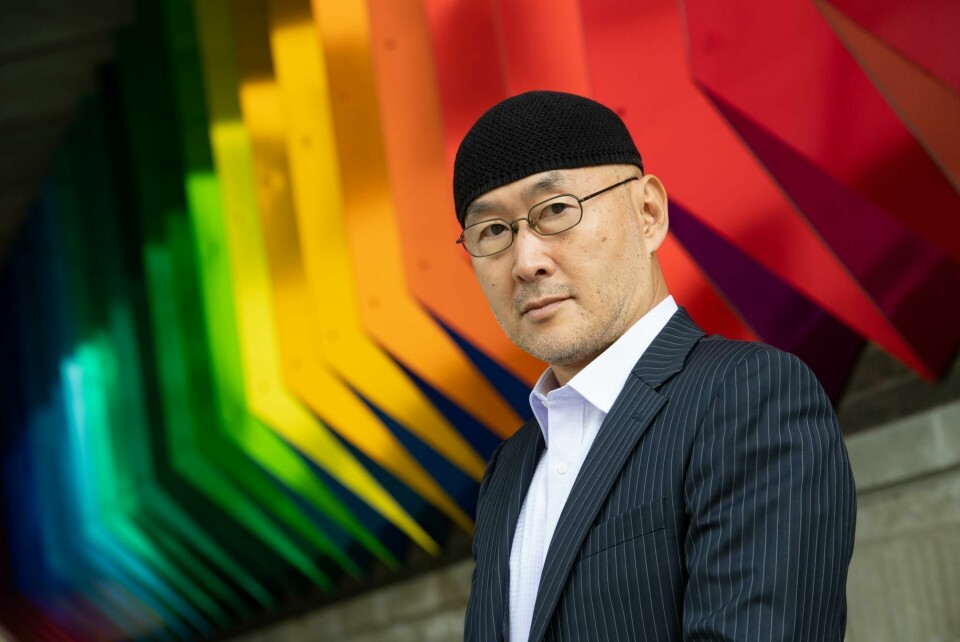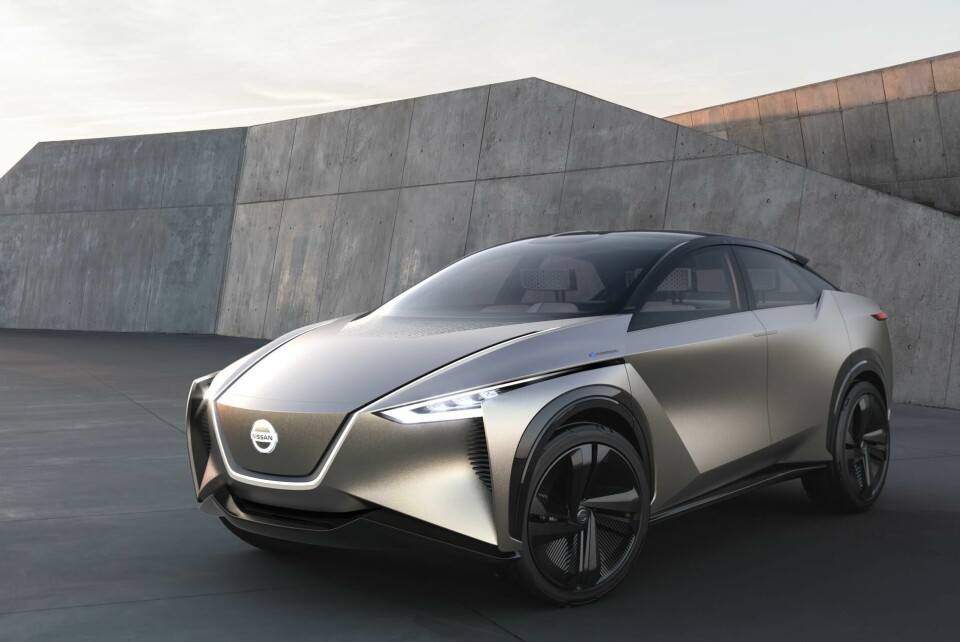
Designer Interview: Satoru Tai, Nissan
“I think everyone is thinking more about society, especially in Japan – something is changing in our minds. But responsible design doesn’t have to be boring.”
Do we say, in Star Wars, when the huge starship is flying over, ‘that’s impossible’? No, we believe in it! So we say with our show cars: in the future, there may be a material which can show anything on a screen, on a surface; HMI will be changed. Every time, we want to challenge things, to let our customers feel they can go to that future with Nissan. That was the case with Teatro for Dayz (2015): a completely white interior with 16 synchronised projectors inside, to show GUI, seat fabric, patterns and every texture, which is a totally new experience of the space. Then, two years later (2017), IMx: if we use a projector, you can’t see it in the daytime, so how about LED dots behind the wood grain area so the wood grain can show the image?
At the same Tokyo motor show (2017), we also had a black box we called ‘the monolith’, covered with LED screens, a complete square box with an interior. These are all related to how we want to translate that total experience into the car concept, both on an emotional level and in terms of cutting-edge technology. Historically, for every Tokyo show, we create two show cars: one is a more realistic car concept, the other is more conceptual and futuristic, a combination. Teatro for Dayz and the monolith are the futuristic, dreamy side, but on the other side, from IDS (2015) to IMx, our EVs are getting more realistic.
Nissan’s big mission is to be an EV leader. The automotive industry was created over 100 years ago, and it has to change – and it is not only electrification or autonomous driving, but customers who are changing, rapidly. Many young people are not as interested in cars as they were, and the meaning of car design is changing dramatically. I’m interested in human beings, first of all, and also, I’m really interested in science and new discoveries. For example advances in the precision of medicine, or in DNA – soon we can even slow our ageing speed. The combination of all that is leading us somewhere new.
So car styling itself is naturally changing, because people’s interests are shifting. It used to be, there’s a gasoline engine, the faster the better, so we used a hunting animal as inspiration: muscle and power. For IMx, Xmotion in Detroit (2018), and IMs (Detroit 2019), we wanted to create an electric vehicle language. And then we were inspired by Japanese culture and values, because, as in our kendo traditional sport, the EV is quiet when standing still, then when you start, it’s a very quick move with maximum power; and Japanese landscape inspires the roomy, open-feeling interiors.

Instead of using an animal shape, IMx is more flat, light, thin, layered – Japanese things are often thin and layered, like a knife that is forged and layered so it is sharp and strong, or paper, or lacquered paint. In Japanese houses, we use very fine wood work a lot; the light goes through but it’s strong, because of the structure. The IMx is the quieter side of Japan, inspired by a garden, and then the Xmotion is the shiny, bright side of Japanese culture, with its dramatic black and red, and the koi carp jumping on the screen. We say ha-re and ke – ha-re is very loud, ke is the quieter expression of Japan.
I have an 11-year-old son and I watch an educational TV programme with him about Japanese history, how we created signs, or buildings, or cities – and every week, I’m shouting ‘wow! I didn’t know this!’ I like it that, at my age, I can still be surprised and amazed by so many things. That’s my energy source, a curiosity. A combination of all of this can create an image or an idea for the future.
Now I have my son, the future is much more realistic than before. My son, and the huge earthquake and tsunami in Japan (2011), really changed me. Before, I was a sports car person and I thought the world would be over when I died! Now, I think more about the society when my son will be grown-up; I think everyone is thinking more about society, especially in Japan – something is changing in our minds. But responsible design doesn’t have to be boring.

Teatro for Dayz and the ‘monolith’ were from Creative Box [Tokyo satellite studio]. It’s a very small team, maybe 15 altogether, but people gather there from different industries to show their work, like CGI creators, movie creators: co-creation is very popular. But I am very busy in Atsugi [Nissan Design headquarters, Kanagawa Prefecture] these days. We have a design team there of 500-600, and many nationalities – Nissan is a very global company – and in design we have shifted to more autonomous management, giving more flexibility to make our dreams come true.
I can say something to somebody, but depending on the person who sees or hears, the solution is different: that’s why we need designers of different nationalities, different backgrounds, with different hypotheses and ideas. We can influence each other. It’s especially important now people are less interested in automobiles, it’s kind of a transition period. And being a good car designer used to mean good sketching, shiny and nice-looking renderings, but that doesn’t mean so much either, now computer graphics can create brilliant renderings. It’s the ideas that are important.
So trying to be a very unique, creative designer is difficult, actually – as is taking care that you have a good balance between a team’s merged way of thinking and originality. That’s a bit philosophical, but how I think.

















